How to help kids cope with anxiety
The past few years of the global pandemic have been anxiety-filled. We had to shift our lives to be at home more. We were living, working and managing our families entirely from home. We worried about our health and our family members’ health. Many adults felt anxious as so much seemed uncertain. It is no surprise that the turmoil also affected our children.
The desire to learn how to help kids cope with anxiety grows more common as parents identify changes in their children’s moods, academic performance and more.These are serious issues, and we always recommend seeking professional help. But to begin to be able to help your child with depression, it’s also important to gain an understanding of what they are going through and how you can empower yourself by taking action.
How the current climate affects children
Some find it hard to believe that serious mental disorders like depression and anxiety exist in children. The truth is that adults aren’t the only ones who deal with depression and anxiety, especially while living during a global pandemic. Children are not exempt from feeling the struggle of unprecedented situations. In fact, during incredibly tough situations, most children experience a feeling close similar to grief. As adults, it is important that we learn how to help kids deal with anxiety.
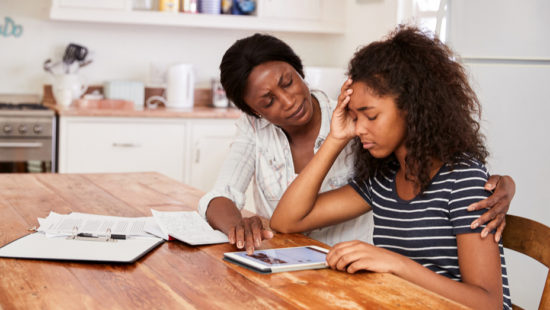
There are three triggers of suffering: loss, less and never.
- “Loss” means an absence of someone or something positive. For children, this is clear – for a long period of time, they lost their friends and social system.
- “Less” is the feeling that you don’t have everything you want or deserve, and follows closely with loss.
- “Never” is the feeling that things will never get back to normal, a familiar worry for many today.
While most of the world is returning to normal after the pandemic, there remains the possibility that we could experience the loss again. This trigger is the most damaging, because it results in hopelessness.
If you’re wondering how to help kids deal with anxiety, the first step is to take them seriously. Just because you cannot physically see their struggles, it doesn’t mean they aren’t there. Our emotions are powerful, and children and teens haven’t yet developed emotional mastery. They need a strong parental figure (or another mentor such as a coach or teacher) to help them regulate their mental health and process the feelings they are experiencing.
Warning signs of anxiety in children
Mood swings and emotional outbursts are normal in children and teens, making it even harder to spot and know how to help kids with anxiety. Pay attention to your children. Learn their habits so you can more easily differentiate between normal levels of stress and overwhelm and those indicating a serious problem. The warning signs of a serious disorder go beyond occasional mood swings:
- Lack of interest and energy. As kids grow, their interests naturally change. But if your child drops things they used to be passionate about and doesn’t pick up a new activity, that’s a hint to dig deeper. Dissociation and avoidance are two signs of a serious anxiety disorder.
- Declining social interest. Similarly, friend groups can change, but if your child stops meeting up with friends entirely or has no interest in going out, that could be a sign.
- Low self-confidence. Does your child make off-hand comments about being stupid or ugly? Low self-confidence often goes hand-in-hand with depression and anxiety.
- Academic failure. If your child used to do very well in school and there’s a sudden drop in their grades, that’s a telltale sign that something is going on.
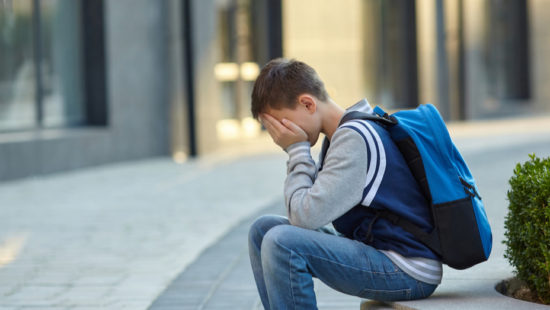
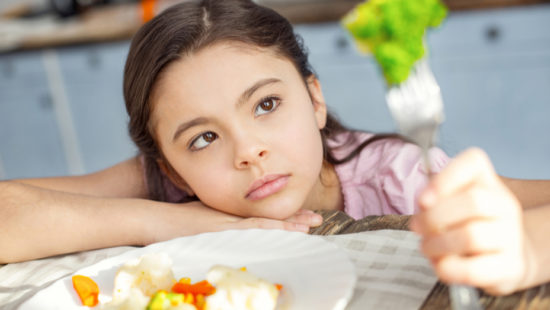
- Changes in eating and sleeping habits. The classic picture of a depressed child is one who sleeps all the time and eats a lot. However, don’t ignore a decrease in their eating patterns or difficulty sleeping. Anxiety can manifest in a lot of different ways, so any change in sleeping and eating habits are causes for concern.
- Irritability and anger. Anxious or depressed children and teens – particularly boys – are much more likely to express their feelings through anger and emotional outbursts than adults.
- Physical aches and pains. Kids and teens aren’t as emotionally literate as adults. Their symptoms can actually manifest physically, like stomach aches, headaches or muscle pains.
Types of anxiety disorders affecting children
Not all children show their anxiety in the same way. Becoming familiar with the variety of anxiety disorders that have been shown to affect children is the key to helping kids with anxiety.
Separation anxiety
After spending every second of our lives together during the height of the COVID-19 pandemic, separation anxiety appears to be more common in children. Children worry that something bad will happen either to themselves or their caregiver if they are separated. Redirecting or distracting the child from these feelings may help them cope.
Social anxiety disorder
Social anxiety disorder is the fear of being judged by others in social settings. Children who suffer from social anxiety are fearful of being embarassed or looking stupid in front of others. It affects their desire to go to school, participate in extracurricular activities and attend other social gatherings.
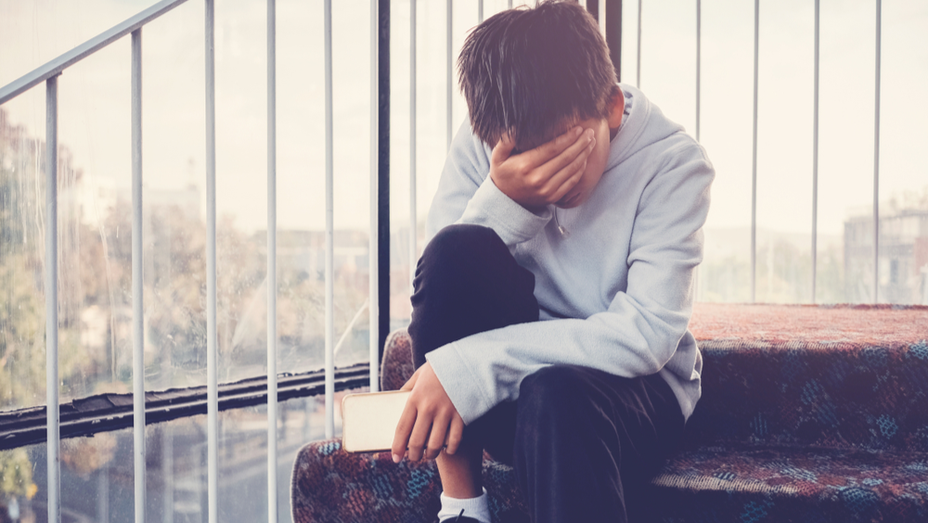
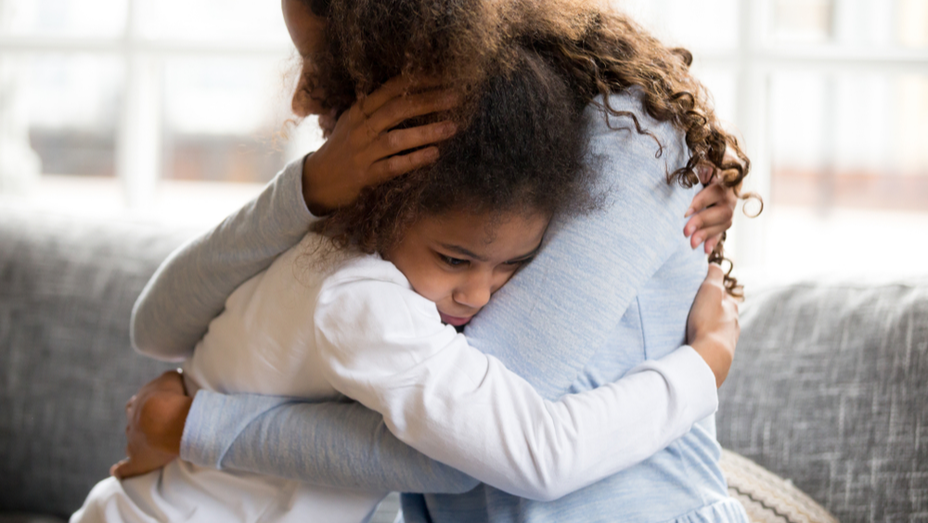
Generalized anxiety disorder
Generalized anxiety disorder, or GAD, is the fear and worry about everything. When a child suffers from GAD, they often fear the meaning behind a canceled event or worry that something bad will happen to them or the people they love. They are constantly worried about themselves and people around them and often seek out approval or reassurance from outside sources.
Panic disorder
Panic disorder is marked with terrifying panic attacks. A panic attack makes the child feel out of control. They may experience shortness of breath or chest pain, similar to that of a heart attack.
Phobias
Phobias, or the fear of a particular trigger, may be related to a previous event. The presence of the trigger will often bring out fear and a feeling of distress in the child that will not resolve itself until the trigger is removed from the situation.
How to handle with a child with anxiety
Once you’ve spotted the signs, you can focus on how to help your child with their anxiety. Communication skills are key here. You always want to approach these important conversations with positivity and support. Never approach these conversations in a way that will make your child feel defensive or uncomfortable.
1. Listen and ask the right questions
Communication starts with deep listening: make eye contact, give verbal and nonverbal confirmations and focus entirely on your child. When they know they’re your priority, they’re more likely to share with you. When they do, ask clarifying questions to get to the root of the problem and determine how to help your child with anxiety in the best way.
2. Help them change their self-talk
Low self-esteem can be a big problem for children, especially teens. As children grow, they go through all kinds of changes that might leave them feeling awkward, lonely or anxious. Teach your children to identify and replace negative self-talk with positive affirmations and empowering beliefs. It will rewire their brains to focus on the positive and shift them into a more positive and appropriate mindset.
3. Encourage connection
Despite the prevalence of social media, lack of in-person interactions and being cut off from friend groups can lead children to feel even more disconnected. Planning an outing or event will help your child deal with their anxiety. Take them out for a one-on-one day of fun activities. Start a family game night each weekend. Whatever you do, your goal is to increase important in-person connections and help your child feel more supported. If in-person events are not an option, organize a virtual get together over Zoom.
4. Promote healthy habits
Wondering how to help kids with anxiety? Healthy habits go a long way to relieve stress, promote confidence and boost moods. Fill your fridge with healthy snacks. Limit access to sugary snacks or processed foods. Promote good sleep habits by turning off devices an hour before bed. Encourage your child to exercise, take up yoga or meditate. It’s never too early to give your child the foundation for a healthy life.
5. Keep it positive
Positive reinforcement is key to building healthy relationships and learning how to deal with a child who is struggling with anxiety. Rather than punishing them, encourage them to engage in positive behaviors and reward them when they do. A child that feels loved and supported is much more likely to open up to you. Opening up that line of communication is key to helping them to stop living in fear and deal with their anxiety.
Important note
The information and other content provided in this article, or in any linked materials, are not intended and should not be construed as medical advice, nor is the information a substitute for professional medical expertise or treatment. See full disclaimer.
Ready to improve your life and your child’s?
Through the newest breakthroughs in precision medicine, you can transform your life and the life of your children. Tony’s newest book, Life Force, provides cutting-edge solutions for some of the most common health concerns.